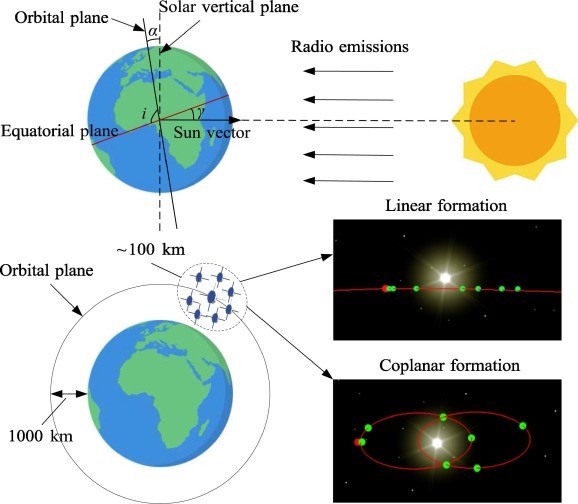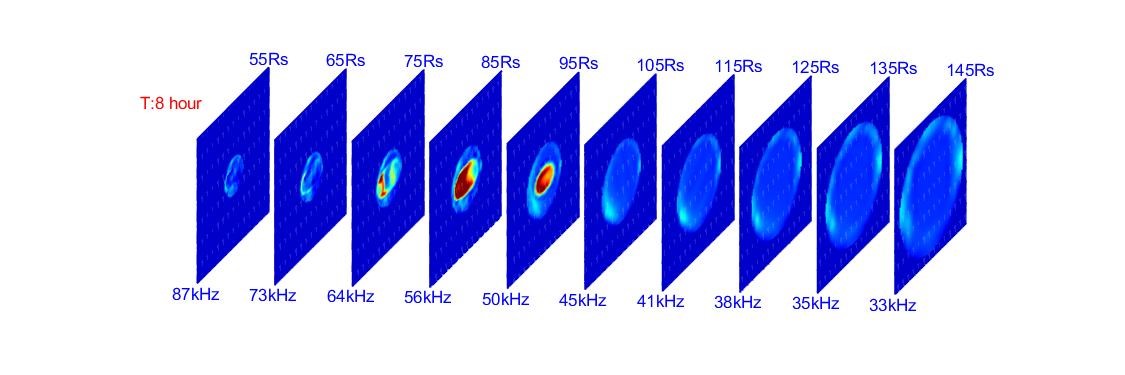A formation design method for interplanetary shock imaging interferometric array proposed
The propagation mechanism, observation, and modeling of interplanetary coronal mass ejections (CMEs) are the main challenges for space weather prediction. During the propagation, the interplanetary CMEs and the accompanying shocks are influenced by the large-scale structures such as the interplanetary magnetic field, the high-speed stream of the solar wind, and the heliospheric current sheet, and the complex processes such as the interaction of multiple events. There are great uncertainties in the prediction of the solar-terrestrial propagation.
Li Deng (corresponding author), Jingye Yan, Lin Wu, Xinhua Zhao and Fang Shen of the State Key Laboratory of Space Weather, National Space Science Center, Chinese Academy of Sciences have proposed a method for low-frequency radio three-dimensional tomography of interplanetary shock waves. One mother satellite and eight daughter satellites carry the low-frequency interferometer imager and spectrometer, which form an interplanetary shock imaging interferometric array with 100km diameter aperture. By using inter-satellite interferometric measurement technology, the time-distance-frequency tomography is realized to locate and track the radio source. The concept was presented at URSI GASS 2023.
Citation: L. Deng, J. Yan, L. Wu, X. Zhao and F. Shen, Interplanetary Shock Three-Dimensional Tomography Based on Small Satellites, 2023 XXXVth General Assembly and Scientific Symposium of the International Union of Radio Science (URSI GASS), Sapporo, Japan, 2023, pp. 1-4, doi: 10.23919/URSIGASS57860.2023.10265359.
Recently, Li Deng (corresponding author) and her team proposed a formation design method for interplanetary shock wave interference imaging array. The satellite formation is deployed in a dawn-dusk sun-synchronous orbit at an altitude of 1000 km, which is convenient for continuous observation of CME. Based on the relative orbit elements, the satellite formation is optimized, and the formation deployment and maintenance strategies are proposed, and the array performance is quantitatively evaluated. The study was published in the journal Advances in Space Research.
Citation: Wang, Y., Deng, L., Yan, J., Li, R., Sun, X., Dong, T., Liu, S., 2024. Formation Design for Interplanetary Shock Imaging Interferometric Array. Adv. Sp. Res. https://doi.org/10.1016/j.asr.2024.04.022.

Figure 1. The mission concept of the CME/shock imaging low-frequency interferometric array based on satellite formation

Figure 2. Low-frequency interferometric array 3-D tomography simulation result


